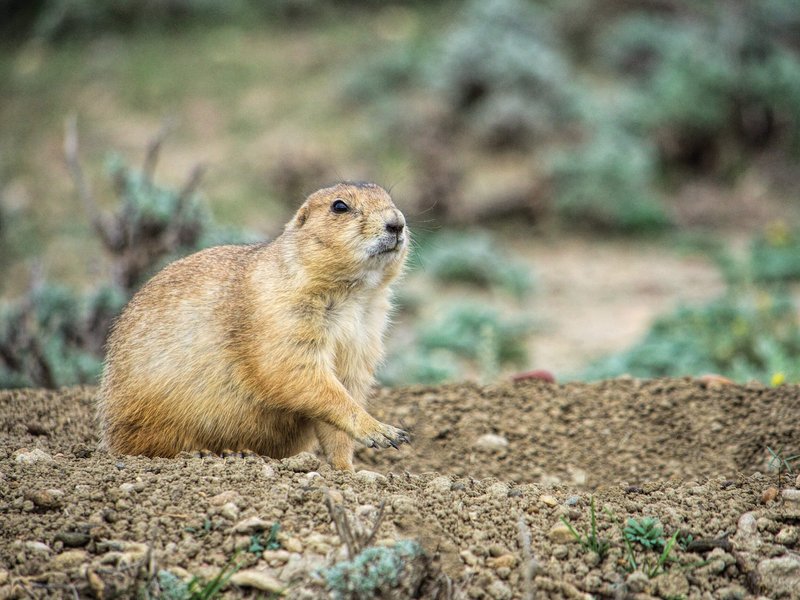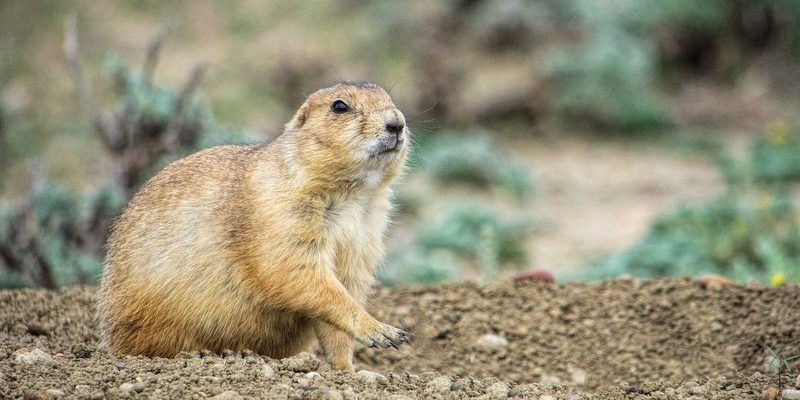
You might be wondering why these social rodents deserve your attention. It’s simple! Prairie dogs play a significant role in their environments and offer a window into the broader evolutionary story of life on Earth. As we sip our coffee and delve deeper, let’s uncover how these remarkable creatures came to be.
The Ancestors of Prairie Dogs
To understand the evolutionary history of prairie dogs, we first need to look back at their ancestors. Prairie dogs belong to the family Sciuridae, which includes squirrels and ground squirrels. They share a distant relative with animals like chipmunks and tree squirrels.
The first members of this family appeared during the late Eocene epoch, around 35 million years ago. These early rodents were quite different from today’s prairie dogs. They lived in forested areas, relying on tree cover for protection. Over millions of years, as the climate changed and grasslands expanded, some squirrel species ventured into open fields. This shift led to the emergence of prairie dogs, who adapted to their new habitat.
One interesting fact is that the earliest prairie dog-like animals were not social at all. Instead, they tended to live solitary lives. However, as they adapted to life on the plains, their behavior began to change, paving the way for the highly social creatures we recognize today.
The Evolution of Social Behavior
Prairie dogs are famous for their complex social structures. You might even say they have developed a sort of “town meeting” system among their colonies. This behavior evolved from their need to survive in open habitats, where being social provided numerous benefits.
Living in groups offers protection against predators. By communicating through barks and other vocalizations, prairie dogs can alert their peers to danger. Imagine walking into a café, chatting with friends about upcoming events, and getting a heads-up about a fire alarm—this is similar to how prairie dogs keep an eye out for threats. Their intricate communication system, which includes specific calls for different predators, showcases their advanced social behavior.
Interestingly, their social structure is also essential for reproduction. Prairie dogs often live in colonies called “towns,” which can consist of hundreds of individuals. Within these groups, they practice cooperative breeding, where some adults assist in raising the young. This shared responsibility helps ensure that more pups survive, reinforcing successful traits through generations.
Now, let’s talk about how prairie dogs have adapted to their environment. Their burrows are a fantastic example of this. These underground homes provide shelter from harsh weather conditions and predators. A single prairie dog has an incredible ability to construct a complex network of tunnels, some extending as deep as six feet.
The burrows not only serve as homes but also act as a communal space. They have separate chambers for sleeping, nesting, and even bathroom areas. This architectural marvel demonstrates how strongly prairie dogs have adapted to their environment to thrive. Plus, these burrowing activities help aerate the soil, promoting healthy plant growth, which benefits the whole ecosystem.
Prairie dogs also have physical adaptations that help them navigate their habitat. Their strong claws are perfect for digging, and their keen eyesight allows them to spot potential threats from a distance. This combination of physical traits and behaviors has led prairie dogs to become experts in their grassy domains.
The Impact of Prairie Dogs on the Ecosystem
You might be surprised to learn just how important prairie dogs are to their ecosystem. Often referred to as a “keystone species,” they play a critical role in maintaining the health of grasslands. Their burrowing activities not only aerate the soil but also create habitats for various other animals.
For example, when prairie dogs dig their burrows, they provide shelter for other species like burrowing owls, snakes, and even some insects. Additionally, their waste contributes nutrients to the soil, promoting plant growth. This interplay creates a diverse community of flora and fauna that relies on the presence of prairie dogs.
However, their existence also faces challenges. With habitat loss due to agriculture and urbanization, prairie dog populations have decreased significantly across their range. Conservation efforts are crucial to ensure these roles continue in natural environments. Protecting prairie dogs helps maintain entire ecosystems.
Unfortunately, prairie dogs have faced numerous threats over the years, which have had a dramatic impact on their populations. Habitat destruction, driven by agriculture and urban development, has decreased their available space to live and thrive. Plus, they’re often viewed unfavorably by ranchers, who see them as pests competing for grazing land.
Another significant threat comes from disease, specifically sylvatic plague. This illness can decimate prairie dog colonies, leading to sharp population declines. To combat these challenges, dedicated conservation efforts have emerged, aiming to protect their habitats and promote healthy populations.
Organizations focused on prairie dog conservation work to create protected areas and educate the public about their importance. By raising awareness and advocating for these social rodents, they hope to ensure a future where prairie dogs continue to thrive in their grasslands.
Looking ahead, the future of prairie dogs is uncertain but filled with potential. As we learn more about these animals and their importance to the ecosystem, efforts to protect and conserve their populations will be more critical than ever.
Restoration of habitats and the establishment of protected areas are vital. Collaborations between conservationists and local communities can foster a better understanding of prairie dogs and build a sustainable coexistence.
Every little bit helps! Even simple actions, like supporting conservation initiatives and spreading awareness, can contribute to a healthier future for prairie dogs. By understanding their evolutionary history, we not only learn about these fascinating creatures but also the interconnectedness of all life on our planet.
In conclusion, prairie dogs are more than just cute, furry animals. Their evolutionary history showcases the remarkable adaptations that have allowed them to thrive in diverse environments. By protecting these unique creatures, we also safeguard the intricate web of life in the ecosystems they help shape. Let’s raise a toast to prairie dogs and the vibrant life they support!

